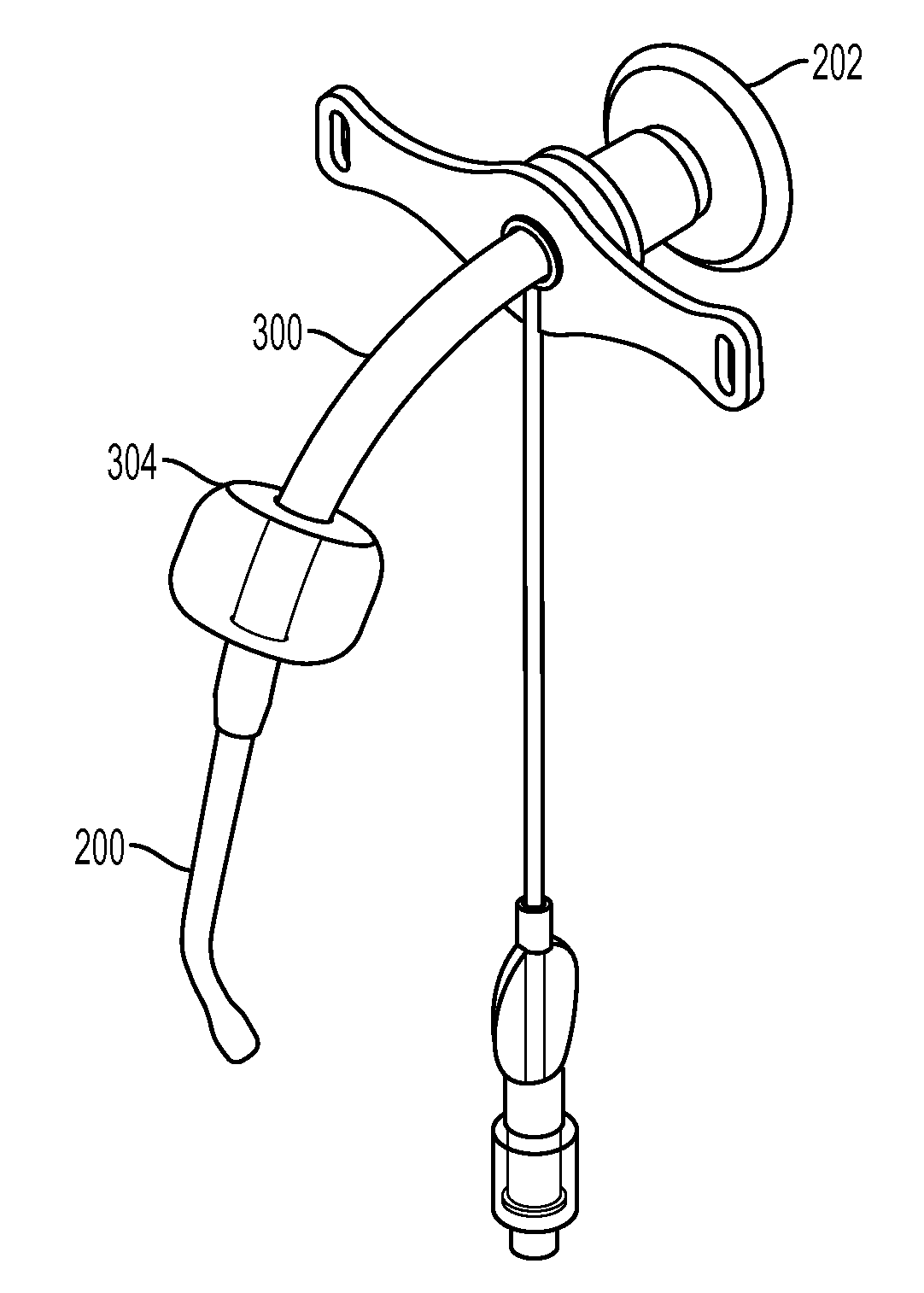Introducer for Surgical Airway Catheters
a technology of airway catheter and surgical instrument, which is applied in the field of medical devices, can solve the problems of false subcutaneous passages, vascular injury of laterally adjacent structures, and intimidation of providers without formal surgical training, and achieve the effects of reducing the risk of vascular injury, and reducing the safety of patients
- Summary
- Abstract
- Description
- Claims
- Application Information
AI Technical Summary
Benefits of technology
Problems solved by technology
Method used
Image
Examples
Embodiment Construction
[0016]A published article by Paladino, DuCanto, and Manoach describes use of a rigid optical stylet for stabilizing the trachea after neck incision, followed by direct visualization of the trachea through the fiberoptic instrument. See “Development of a rapid, safe, fiber-optic guided, single-incision cricothyrotomy using a large ovine model: a pilot study,” Paladino L., DuCanto J., and Manoach S., Resuscitation, 2009 September; 80 (9):1066-9 (Epub 2009 Jul. 15). After the opening is expanded with another scalpel incision, the authors passed a pre-loaded, snug-fitting short airway tube over the stylet into the trachea.
[0017]Problems in the prior art are addressed in accordance with the principles of the present disclosure by providing technique for inserting a surgical airway catheter using an introducer that is simpler than the device described by Paladino et al. and without the need for fiberoptic guidance.
[0018]FIGS. 1(A)-1(D) show four different views of introducer 100 according...
PUM
 Login to View More
Login to View More Abstract
Description
Claims
Application Information
 Login to View More
Login to View More - R&D
- Intellectual Property
- Life Sciences
- Materials
- Tech Scout
- Unparalleled Data Quality
- Higher Quality Content
- 60% Fewer Hallucinations
Browse by: Latest US Patents, China's latest patents, Technical Efficacy Thesaurus, Application Domain, Technology Topic, Popular Technical Reports.
© 2025 PatSnap. All rights reserved.Legal|Privacy policy|Modern Slavery Act Transparency Statement|Sitemap|About US| Contact US: help@patsnap.com



